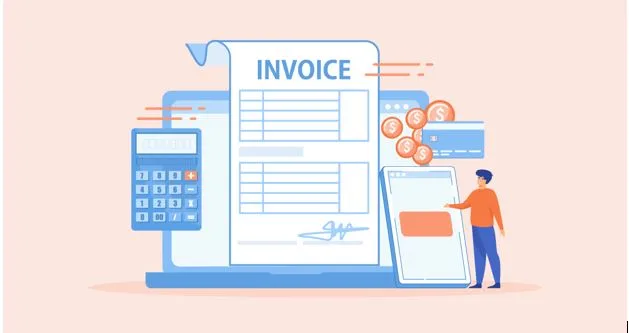Top E Billing Platforms Legal Teams Rely On in 2025
The rise of e-billing has transformed how legal departments handle spend, enforce billing rules, and monitor outside counsel costs. Manual review methods aren’t built for the volume, variation, and compliance demands of corporate legal operations. The platforms gaining traction in 2025 are those that automate invoice intake, apply billing guidelines with precision, and generate insights legal and finance teams can use. Below is a breakdown of the top systems legal teams rely on, with LegalTrack placed first and evaluated objectively.
1. LegalTrack
LegalTrack is purpose-built for managing the full lifecycle of legal invoice processing. It centralizes intake, detects non-compliant charges, and aligns spend with matter budgets. Legal teams use it to enforce billing rules without chasing firms over email or spreadsheets. The platform supports configurable workflows so invoices follow consistent approval paths before reaching finance. For departments dealing with multiple firms and international guidelines, this structure reduces administrative waste and budget bleed.
The reporting layer is one of its major strengths. LegalTrack gives visibility into firm behavior, spend patterns, and deviations from negotiated terms. Finance and legal users can track performance and costs without toggling between multiple systems. Its scalability makes it suitable for both midsize teams and global legal departments processing high volumes of invoices. The platform focuses on real operational use rather than oversized feature sets.
Strengths
- Robust rule-based invoice validation
- Integrated matter and budget tracking
- Scalable across department sizes
- Clear spend and performance analytics
- Supports finance and legal collaboration
Limitations
- Advanced forecasting may need configuration
- Implementation planning is key for complex orgs
- Smaller teams may not use every module
LegalTrack structures the entire e-billing cycle around compliance, accountability, and visibility, reducing manual oversight.
2. eBillingHub
eBillingHub is used primarily by firms and legal service providers, but it plays a direct role for in-house teams receiving and reviewing invoices. It supports standardized formats, helps firms submit cost data correctly, and connects with practice management tools. When legal departments work with vendors already using eBillingHub, invoice intake becomes cleaner and faster.
The platform focuses on compliance with LEDES formats, timekeeper validations, and rate enforcement. While the interface is oriented more toward providers than corporate buyers, legal departments benefit when firms use structured tools at the source. eBillingHub reduces invoice rejections and format inconsistencies that stall approvals.
Strengths
- Supports accurate LEDES formatting
- Reduces invoice submission errors
- Integrates with common law firm systems
Limitations
- Not designed as a full in-house platform
- Limited spend analytics for legal departments
- Works best when firms already use it
3. SimpleLegal
SimpleLegal delivers matter management, invoice processing, and spend tracking in a streamlined environment. It appeals to teams that want a modern interface without enterprise complexity. The system handles invoice intake, billing guideline checks, and basic performance analysis while connecting data to case-level details.
Its dashboards reveal cost trends and firm activity, allowing legal ops to track budgets more confidently. SimpleLegal balances usability with structure, making it attractive for departments transitioning out of manual invoice processing. While it doesn’t offer the depth of some enterprise platforms, it covers core needs efficiently.
Strengths
- Clean interface and intuitive navigation
- Useful matter-to-spend visibility
- Strong fit for mid-sized legal teams
Limitations
- Less automation for complex billing rules
- Limited global and multi-currency capabilities
- Advanced forecasting is minimal
4. Hyperion ELM Solutions
Hyperion ELM Solutions provides legal spend management tools geared toward large enterprises. It integrates with matter management, compliance workflows, and reporting systems. The platform is used by teams that want detailed oversight of law firm billing behavior, including rate changes, accruals, and deviations.
Its workflow engine supports approval chains tied to department structures and budget hierarchies. Hyperion emphasizes configuration so legal departments can match the tool to internal policies. While it requires setup effort, it provides control over every step of the invoice lifecycle.
Strengths
- Highly configurable workflows
- Strong alignment with enterprise policies
- Accommodates complex approval models
Limitations
- Longer deployment cycles
- Interface may feel heavy for smaller teams
- Requires defined processes to maximize value
5. Brightflag
Brightflag uses AI to review invoice line items, detect out-of-policy billing, and tag cost data for reporting. Legal teams use it to enforce billing rules without manual scrutiny. The system analyzes time entries, expense descriptions, and rate compliance, reducing excessive or non-approved charges before payment.
Its reporting tools show spend allocation by matter, firm, practice area, or jurisdiction. Brightflag is used by teams needing predictive oversight along with automation. It fits departments prioritizing data-backed decision-making tied to billing trends.
Strengths
- AI-assisted line item review
- Detailed spend categorization
- Global billing format support
Limitations
- Premium features add cost
- May be more robust than small teams require
- Configuration matters for performance
6. CounselLink
CounselLink from LexisNexis remains widely adopted for invoice oversight and matter-based cost tracking. It enforces corporate billing guidelines, supports rate negotiation, and routes invoices through custom approval paths. Many legal departments use it for its mix of structure and vendor familiarity.
The platform also provides reporting tools that show spend across regions and firms. CounselLink fits organizations that want long-term stability and established workflows rather than experimental interfaces. It’s commonly used in global or multi-division environments.
Strengths
- Established platform with broad adoption
- Enforces billing rules and rate oversight
- Effective for multi-department coordination
Limitations
- Interface feels dated compared to newer tools
- Deployment and updates can be slower
- Analytics are less advanced than AI-based solutions
7. BusyLamp
BusyLamp is recognized for legal spend management across European jurisdictions. It structures invoice submission, budget monitoring, and firm collaboration without complex system demands. Teams adopt it to standardize billing guidelines and track spending across multiple offices.
Its dashboards provide visibility into invoice status, cost categories, and budget usage. BusyLamp works best for organizations that need compliance and clarity rather than oversized workflows. It’s used by teams advancing their e-billing maturity at a controlled pace.
Strengths
- Strong support for European billing norms
- Clear budget and spend reporting
- Lightweight setup requirements
Limitations
- Smaller footprint in North America
- Limited AI and predictive tooling
- May need customization for global scale
8. Onit
Onit is built for workflow automation across corporate legal operations, and its e-billing component is integrated with those processes. It supports routing, budget enforcement, invoice review, and spend analytics while connecting to other legal functions like contract management or compliance.
The platform’s configurability is a draw for companies building interconnected legal tech stacks. Onit is often chosen by enterprises aiming to align billing with adjacent legal workflows. However, that flexibility comes with complexity during rollout.
Strengths
- Highly customizable workflows
- Embedded in broader legal operations tools
- Supports multi-team coordination
Limitations
- Extensive setup planning required
- Can exceed needs of small departments
- Pricing reflects enterprise positioning
9. Questel
Questel provides IP management and legal spend capabilities designed for teams working with patents, trademarks, and cross-border filings. It offers invoice validation tied to project budgets and global counsel engagement. Legal departments that manage heavy IP portfolios use it to bring structure to cost oversight.
The platform aligns spending with legal projects and compliance requirements. Questel is useful when invoice review intersects with docketing, renewals, or IP strategy. It’s not a broad legal ops solution but strong where intellectual property drives spend.
Strengths
- Ideal for IP cost tracking
- Links invoices to legal project data
- Supports multi-country billing needs
Limitations
- Narrower scope outside IP functions
- Less general-purpose automation
- Requires integration for firm-wide use
10. App4Legal
App4Legal is used by teams that want case management and billing capabilities in one system. It supports invoice generation, cost tracking, and internal approvals, making it accessible to legal departments with smaller budgets or lighter vendor networks.
The system helps organize outside counsel billing for teams without enterprise platforms. While not as feature-rich as larger tools, it’s a practical step up from spreadsheets and email-based approvals.
Strengths
- Easy to implement and use
- Suitable for smaller legal teams
- Combines case management with billing
Limitations
- Limited automation for complex billing rules
- Not built for high-volume invoice environments
- Basic analytics and reporting
The Direction of E-Billing in Legal Ops
Legal departments are moving beyond invoice digitization toward full-cycle control. The systems gaining ground in 2025 automate validation, streamline routing, and surface analytics that drive negotiation and budgeting. Teams relying on manual checks are phasing out legacy workflows in favor of scalable invoice governance.
The difference between leading platforms and basic billing tools lies in integration, configurability, and insight generation. As scrutiny around legal spend intensifies, e-billing platforms that reduce manual effort while improving financial visibility are becoming non-negotiable. Tools like LegalTrack anchor that shift by aligning compliance, budgeting, and performance tracking in one environment.





